Harold Hume Piffard
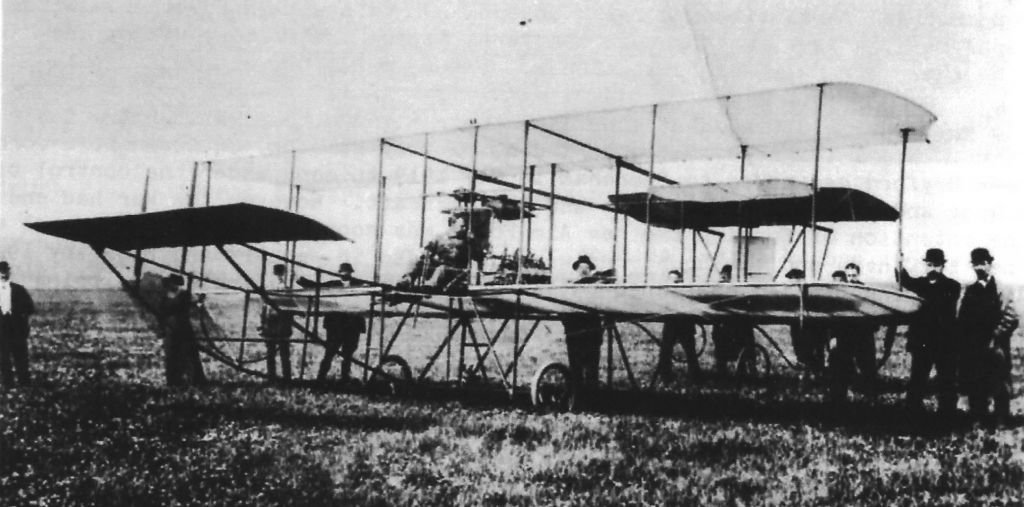
While trawling the car boot sales last year, I stumbled upon an old book, ‘The History of British Aviation 1908-1914’, by R. Dallas Brett, 1933. As with so many of my car boot, book acquisitions, it took a while before I picked it up and had a decent nose through. When I did though, I was pleasantly surprised to see how many times our local airport was mentioned, and this inspired me to delve deeper in to Shoreham’s aviation history, beginning with its very own pioneer, H.H. Piffard. I hope any local history, or aviation enthusiasts will enjoy reading the results of my research. Here is the first part:-
Aviation inventor and artist, Harold Hume Piffard was born at 33 Blandford Square, Marylebone, London, on 10th August 1867, to Charles Piffard, a barrister at law who became ‘Clerk of the Crown’ at the High Court of Calcutta, and Emily Hume. Harold’s two eldest brothers, Hamilton, (1862), and Reginald, (1863), had both been born in Calcutta, while he and his other brother, Lawrence, (1865) were both registered as having been born in Marylebone, London. Harold’s first introduction to the Adur Valley came when he followed his elder brother, Lawrence, and started at Lancing College School House in 1877. He was given the nickname, ‘Piff’, by his friends, and made a name for being a bit of a jester. According to Lancing College archivist, Janet Pennington:-
‘On Sunday afternoons, a train passed over the railway bridge near Beeding Cement Works, when Piffard apparently often took the opportunity to ‘execute a war dance – in puris naturalibus – in front of the engine, and then drop into the river through a hole in the track.’
‘Keen on dramatics, (obviously) at the age of 12 he absented himself from Lancing one winter Sunday afternoon and walked to London, arriving on the Tuesday. He tried all the theatres and music halls, unsuccessfully seeking employment. He slept on the Embankment for several nights before returning to face the wrath of the Head Master, the Revd. R. E. Sanderson.’
‘On leaving Lancing in 1883, Piffard returned to India and was employed on a Darjeeling tea plantation for a while.’
Harold Piffard was to become a successful artist, exhibiting 4 paintings at the Royal Academy from 1895 to 1899. At the 1895 exhibition, held between 6th May and 5th August, his first exhibit was number 881, ‘The Last of the Garrison’, in 1897, number 527, ‘The Last Review: Napoleon at St Helena in 1820, watching the children of General Bertrand playing at soldiers’. At the 1899 Royal Academy exhibition, Piffard had two entries, lot 64- Saragossa: 10 February 1809’, and lot 956- ‘The Execution of the Duc d’Enghien’. He is listed as having two addresses in the Royal Academy Exhibitors catalogue:- 29 Cambridge Avenue, Maida Vale, London, and 18 Addison road, Bedford Park, London.
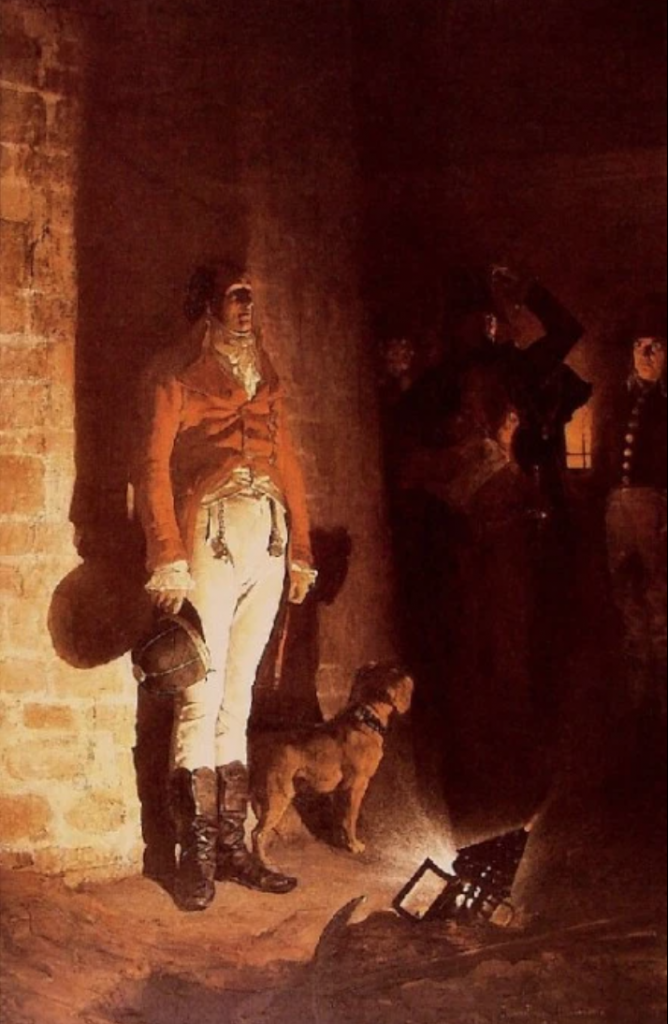
His brother, Hamilton Piffard, was a successful actor touring Britain, receiving warm praise from the newspapers of the time, and also confusing this researcher for a while in to believing it was Harold, with yet another string to his already impressive bow. It took a while before an article eventually gave the full name rather than initialled ‘H.Piffard’, and the penny dropped.
Following the recognition of his obvious talent at the 1895 exhibition, Harold married Helena Katherina Docetti Walker on the 1st June 1895 at St John’s church, Dundee. Together they had four children, Harold (b 1896), Dorothy (b 1898), Ivan (b 1899), and Grahame (b 1900). It would seem the last child must have had complications at birth, as Helena died 27th November that same year, and Grahame died 12th Feb 1901, aged just 3 months.
.
Harold had also become a renowned illustrator of adventure books for boys, among which were:-
‘The City of Gold’ by E Markwick 1895
‘Sybil Falcon’ by E. Jepson 1895
‘Zoraida. A Tale of Arab Romance’, by William Le Queux 1895
‘Yerut the Dwarf’ by Max Pemberton 1897
‘Living London’, March 1903
‘The Boys Book of Battles’, Dec 1902
‘Victory Adventure Book’, compilation edited by Herbert Hayens. 1916
Was it coincidence perhaps, that in the Victory Adventure Book, the previous story to ‘A Terrible Night’, which Piff illustrated, was ‘How an Aeroplane Flies’, written by Claude Grahame-White, another pilot strongly associated with Shoreham Airport, from around the same time as Piff would be trying out his hydroplane at Bungalow Town in the summer of 1911.
On the 8th January 1902, Harold married Eleanor Margaret Hoile (b 1871) at the Chapel Royal of Scotland, Edinburgh, and on the 28th July 1905, they had a son, Hume Piffard, at 178 High street, Aberdeen, Harold’s occupation:- ‘Artist (portraiture)’
Sometime during the first decade of the 1900’s, he became interested in designing and constructing model aeroplanes at his studio in Ealing, with a friend, Barbara O’Manning, one of his students, (possibly the Barbara Blank mentioned in later photographs of Piffard’s experimental aircraft designs at Shoreham).
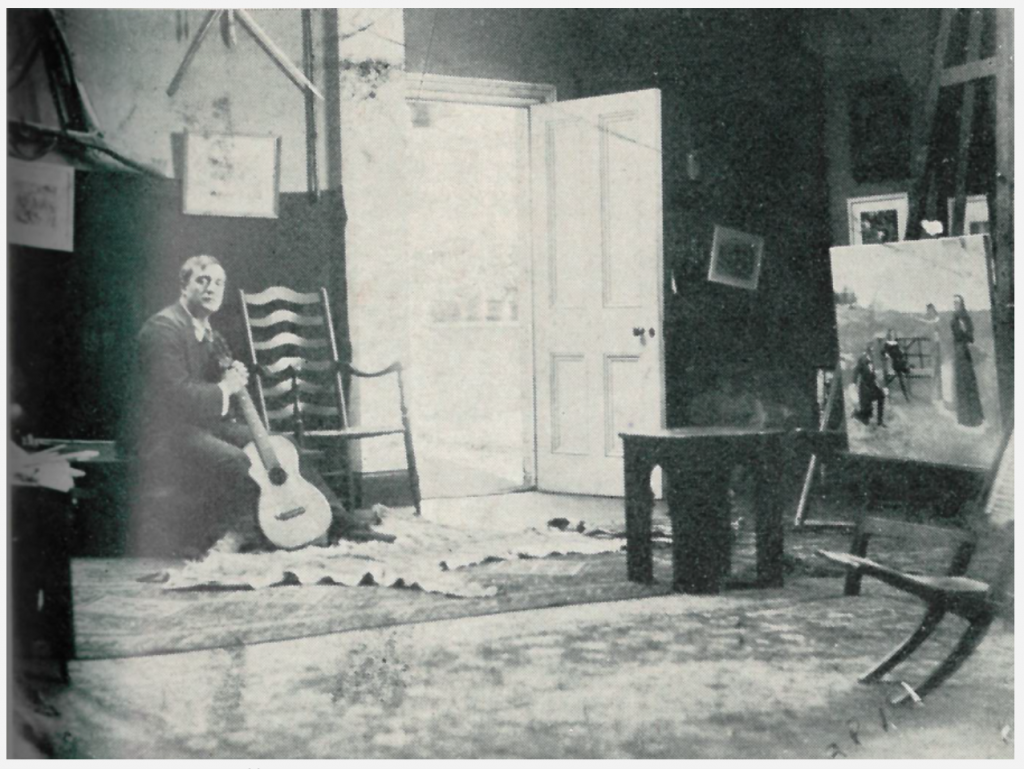
In April of 1907, models of aeroplanes and flying machines caught the imagination of visitors to Cordingley’s Motor Show and Aero Club Display at the Agricultural Hall, Islington, London. Of all the competitors only two attained anything close to success, A.V. Roe and F.W.Howard, who were streets ahead of their rivals. Mr Howard’s glider, the screw driven by a coiled spring, went over 70 ft, while A.V. Roe’s Aeroplane flew the distance into the safety net ninety feet away. Harold Piffard’s model was recorded as having bent its propeller on the first attempt.
The Wright brothers exploits were the talk of the town following the announcement of their first controlled, sustained flight on the 17th December 1903, near Kitty hawk, North Carolina. It’s not unreasonable to believe this may have helped to inspire Piffard’s aerial hobby, winning a bronze medal for one of his glider models in March 1909. Having decided to build and learn to fly a full-size aeroplane, he built it at his studio and transported it in sections to Hanger Hill, North Ealing. Unfortunately, after flying just a short distance, it was destroyed on the ground during an overnight storm. Not to be put off by this misfortune, Harold determined to construct another aeroplane, with a small band of fellow amateurs to assist, learning on the hoof, as all the early aviators had to do. Remembering from his time at Lancing College in the Adur valley, the expanse of flat land to the south of the college, north of the London Brighton & South Coast railway line, and to the west of the River Adur, Piffard realised that this would be the perfect place to continue his aerial experiments.
It was reported in the Bexhill-On-Sea Observer, Saturday 16th Oct 1909, that:-
‘A proposal is in the air for the establishing of an International ground for Aviation purposes at Shoreham’
This was the first mention I had found of a potential aerodrome, (or proposal for one at least), at Shoreham.
An early ‘star’ of aviation, was Monsieur Louis Paulhan, one of a number of world leading French flyers, and he was to be recognised, along with some noted British aeronauts of the time, by a dinner in their honour, among them, a certain H.Piffard. The Morning Post, Thursday 4th November 1909 reports:-
‘M. Louis Paulhan, who made such excellent flights on his Farman biplane “Le Gypaete” at Brooklands last week, has been engaged to fly at Sandown racecourse on Friday and Saturday next, when he will make attempts on the records for duration and height. M. Paulhan has inspected the racecourse, and expressed the opinion that it is suitable in every way as a flying ground. His aeroplane left Brooklands for Esher yesterday. The following distinguished aviators will be the guests of the New Vagabond Club at the opening dinner on the 15th inst. Mr G.T.C. Moore-Brabazon, Mr. Harold Piffard, the Hon. C. Rolls, M. Latham, M. Paulhan, and M. Delagrange.’
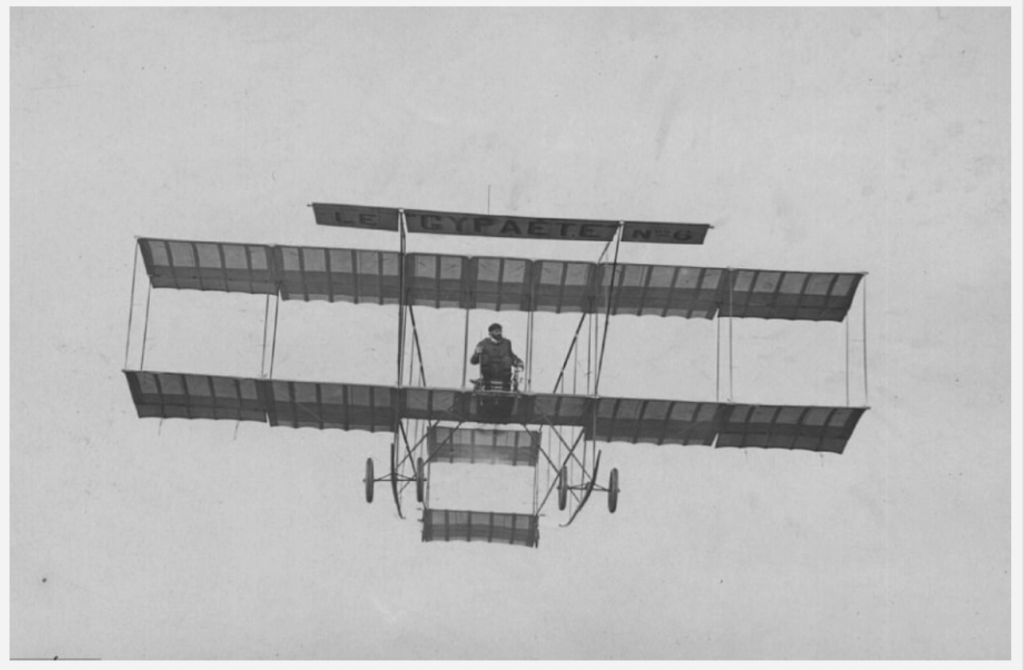
In Flight magazine of 28th May 1910, a picture of his latest aerial invention is shown:-
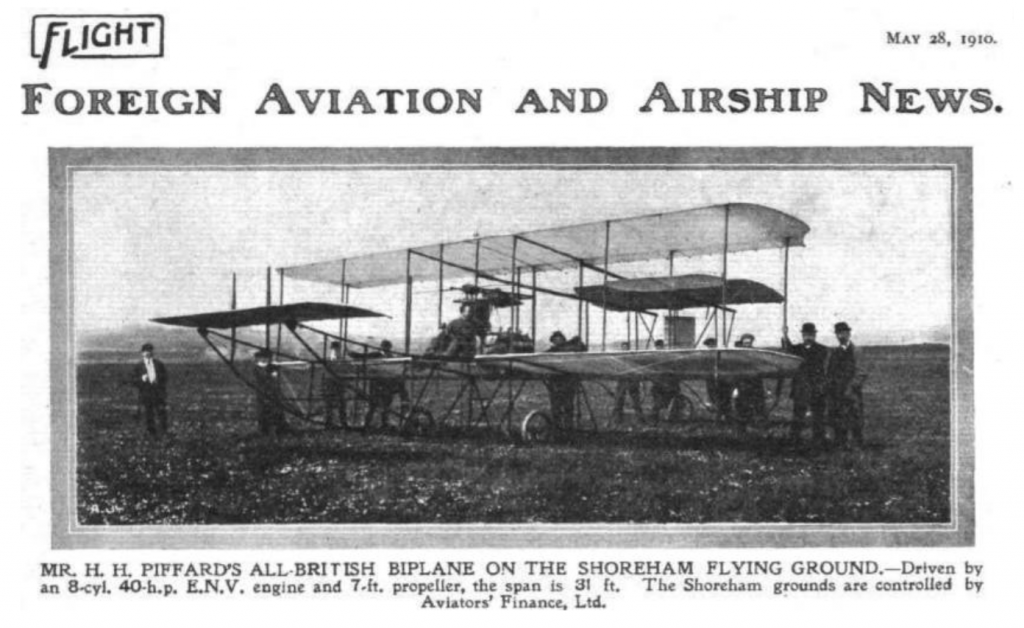
The Lancing College Magazine of May 1910 reported that Piffard was:-
‘…the first aviator to have made use of the Shoreham Aerodrome and we have been much interested in watching his ‘wheeling’ flights round the field. He lunched in Hall on May 8th …Rumour suggests that he will alight on Upper Quad and demand a ‘half’ ere long.’ (The latter was no doubt a hoped-for half day holiday rather than a half pint of beer). LCM June 1910 notes that, ‘Piffard…came sadly to grief towards the end of May…none of the aviator’s bones were broken and we understand that his courage is still unshaken.’
Piffard had apparently joined solicitor George Wingfield and established The Aviators’ Finance Co. Ltd., leasing the land next to New Salts Farm, Shoreham, with a view to creating a permanent flying ground. They built a hangar, (or shed as they called it then) for his aircraft that Piff had named Hummingbird, and achieved a few short hops, which were enough to capture the attention of a pub landlord, whose hostelry was off the road north of the airfield. One of Piff’s helpers, E.M.Sutton, recalls in a 1968 issue of Sussex Life Magazine:-
‘It is difficult to realise nowadays, the incredibility which the majority of people held in regard to mechanical flight. For instance, there was the landlord of an inn (Alfred Evans of the Sussex Pad Inn) situated at the farther end of the field where the aeroplane was housed in its shed. He was one of those who thought that, to try to fly like a bird was “against Nature”. After inspecting the machine in its shed he turned to ‘Piff’ and said, “If you ever fly the length of this field, walk in to my pub and I’ll give you a crate of champagne”
The weather not being favourable until a week later, when the time came, Piff was eager to win some champagne, as Mr Sutton writes:-
‘Piffard seated himself precariously on the leading edge of the lower wing with his legs stretched out in space to reach the rudder bar. He gripped the control column and signalled that he was ready. After several attempts at starting the engine by swinging the propeller by hand, a welcome noise announced the power of 40 horses had been released. “Piff”, with a determined grin on his face which plainly said, “I’ll show him”, pointed the aeroplane at the hotel at the farther end of the field. He opened the throttle and the machine moved forward. In a run of two or three hundred yards it was airborne. The first flight over Sussex had been achieved. As the hotel loomed nearer, “Piff” throttled back and allowed the machine to touch the ground. This of course was a manoeuvre which had not been rehearsed, and it was only at this juncture it was discovered that the landing gear would not bear the force of impact. It folded up fairly gradually, so not too much stress was put on the rest of the machine. “Piff” was pitched forward on to the grass with nothing worse than a few bruises. However, that expensive piece of wood carving, the propeller, was badly damaged. “Piff” surveyed the wreck, “The engine’s all right”, he announced, “this machine only needs a new undercarriage and a new propeller. Come on lads, let’s get her back to the shed”. That was hours of hard work, not made easier by the weight of the crate of champagne.’
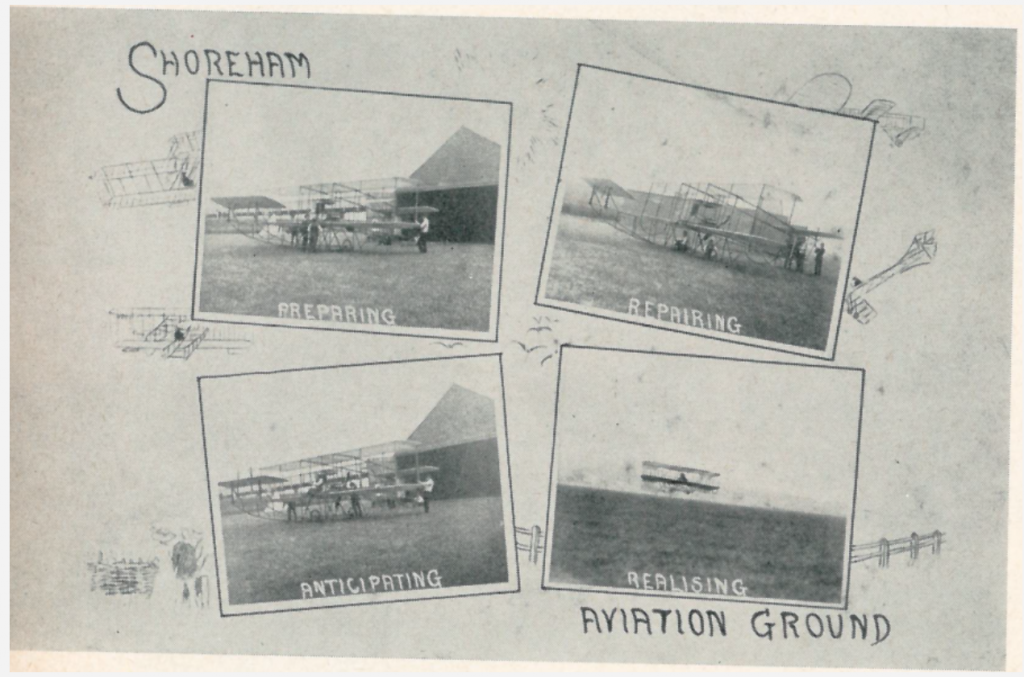
This exciting activity could hardly have failed to capture the attention of pupils and masters alike at Lancing College, resulting in the Head Master, the Revd. Henry Thomas Bowlby, inviting their former pupil, now aged 43, for a special dinner at the College in honour of his achievement. This would have had an inspiring effect no doubt on any aspiring aviators at the college.
After this initial success came many more flights, and no shortage of accidents to go with them, Piff sustaining various injuries which included being knocked unconscious, having stitches to a gashed leg, and doubtless, numerous bruises. In the September 10th 1910 issue of Flight magazine, it reports:-
‘Mr H. Piffard at Shoreham.
As a result of solid perseverance and experiments, Mr Piffard is now starting practical work in earnest, and last week was making some satisfactory essays over a half-mile stretch with his bi-plane.’
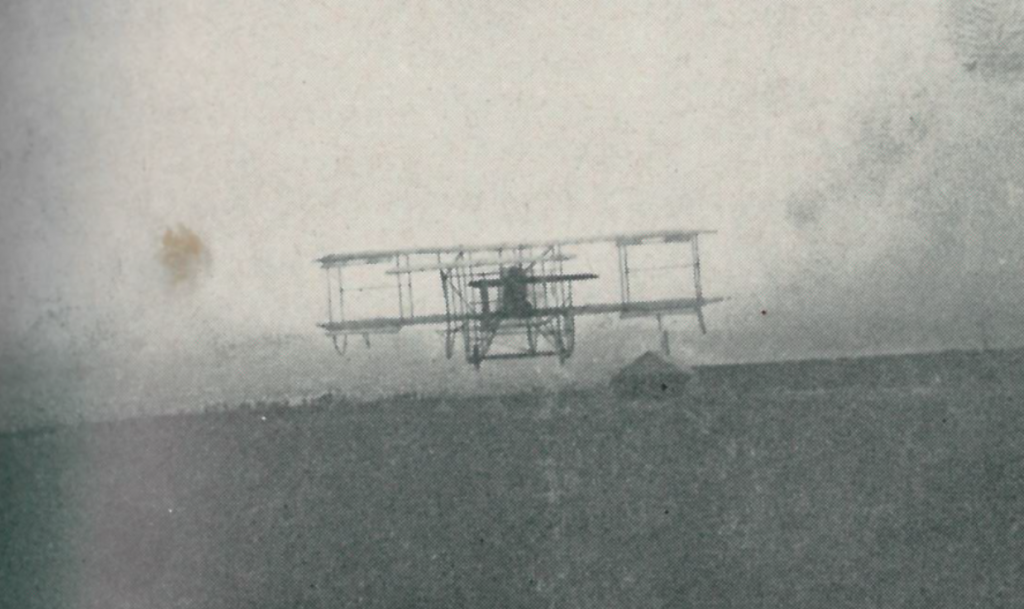
With the summer of 1910 over, sadly, in October 1910, Piffard crashed again, which resulted in his flying machine being broken beyond repair. Leaving the Hummingbird stored in its shed, he returned to his studio in London, and set about designing an aeroplane which could take off from water.
References:-
Article written by Janet Pennington, the Lancing College Archivist, and published in the Lancing College Magazine, vol 80, no 603 (Summer-Advent 1999)
Flight Magazine archives:- https://archive.org/search.php?query=subject%3A%22Flight+International+Magazine%22
British Newspaper Archives Online:- http://www.britishnewspaperarchive.co.uk/
Shoreham Airport. The Story of Britain’s Oldest Licensed Airport. By T.M.Webb and Dennis L Bird. 1996
The First Man to Fly Over Sussex. By E.M. Sutton. Sussex Life Magazine May 1968
Shoreham Airport, an Illustrated History. By Peter C. Brown. 1988
The History of British Aviation 1908-1914. By R. Dallas Brett. 1933
Ancestry.co.uk
Andy Ramus 2021
For the additional article chapters follow the links:

